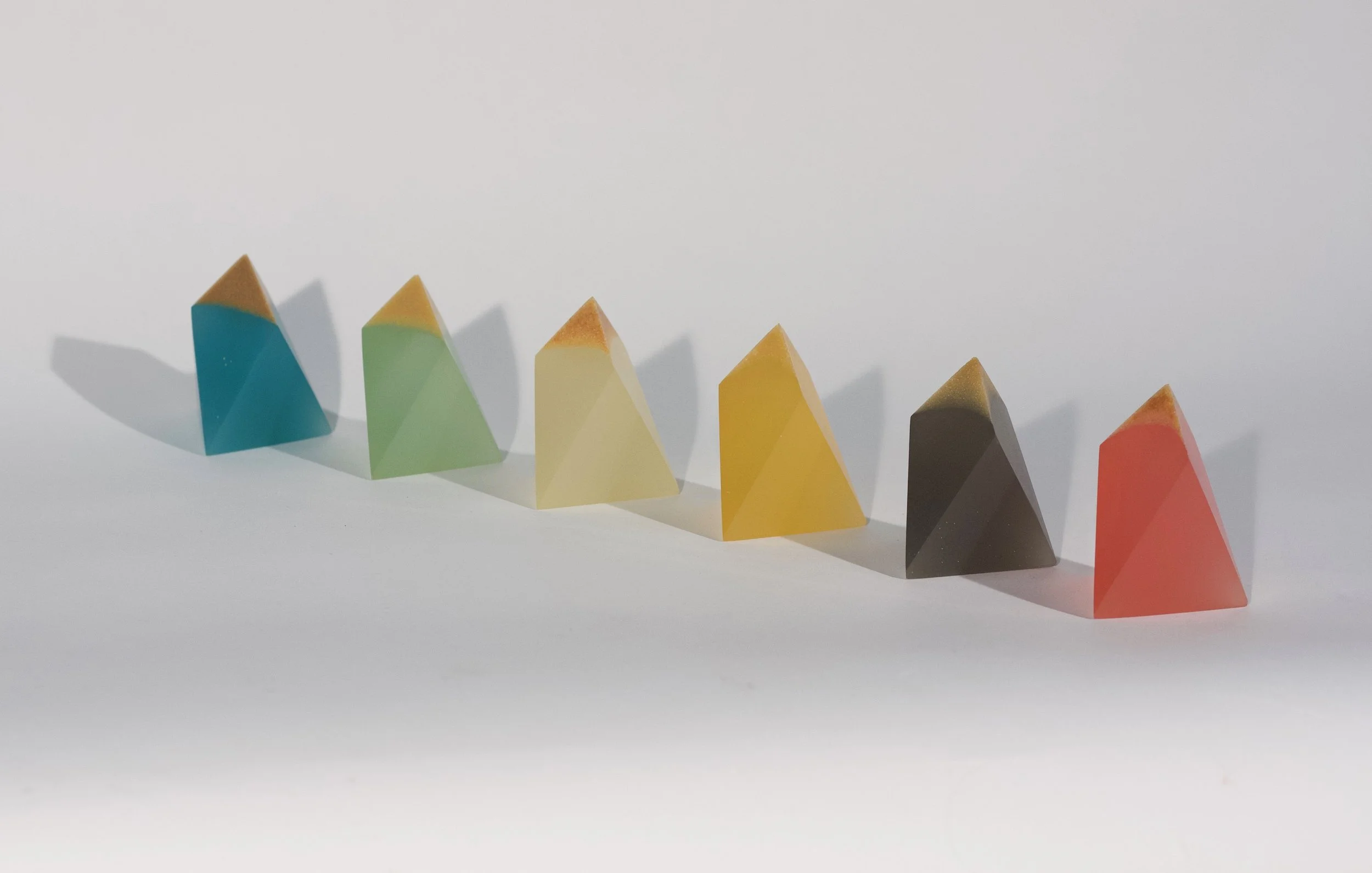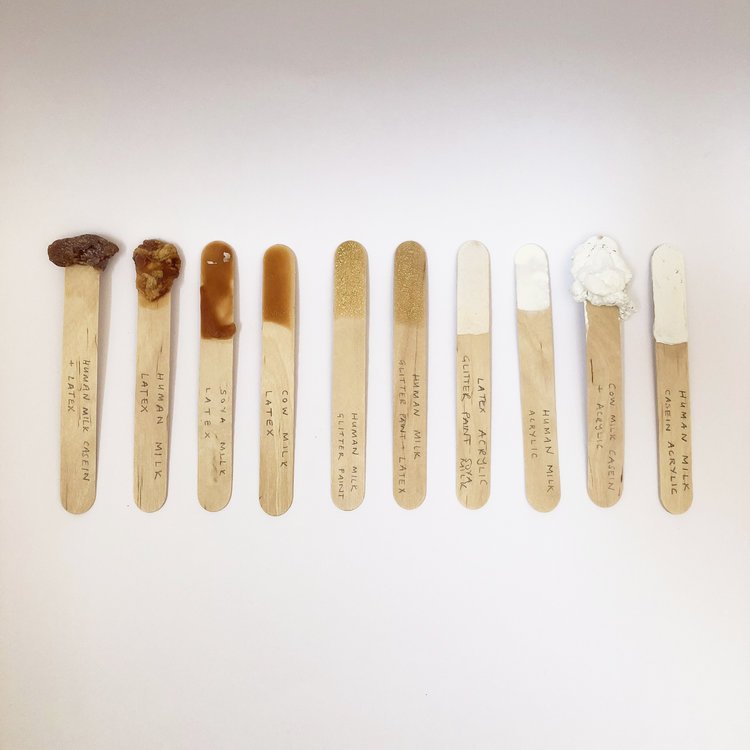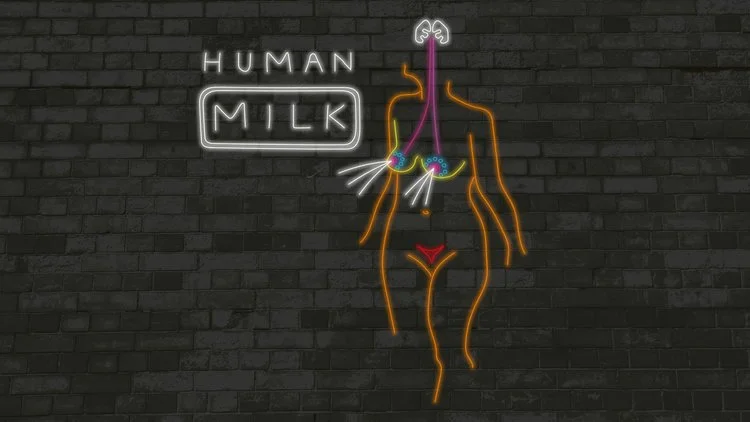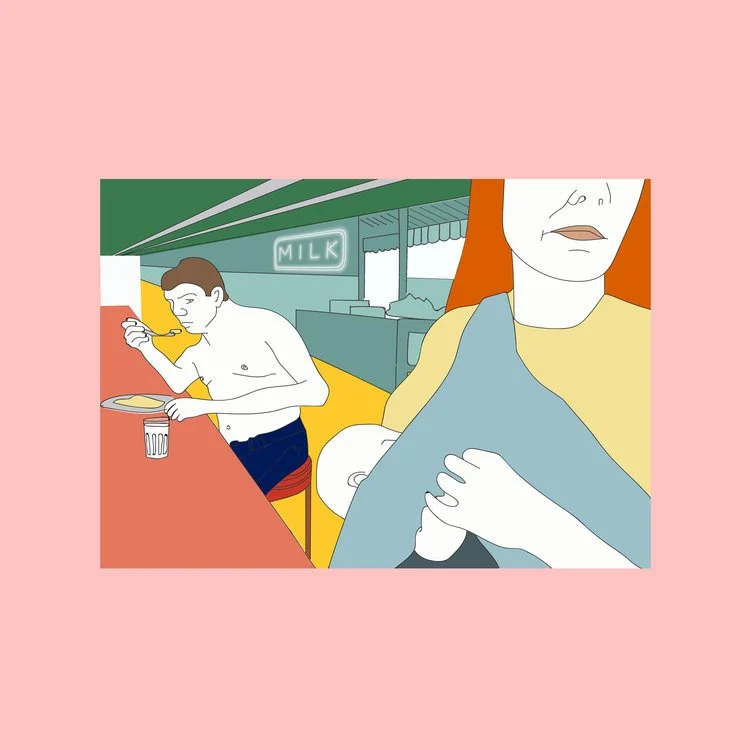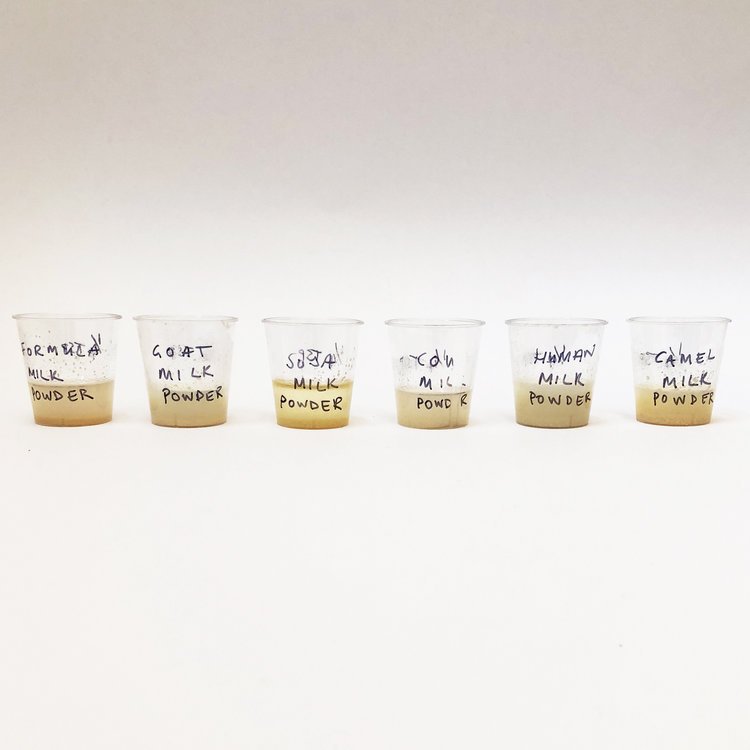
Eating Mothers : Milk Matters
Eating Mothers - Milk Matters is a collection of critical design experiments which explore the materiality of milk and embodied experiences of milk making.
This is a practice based design research project seeking to develop new insights into the use and social understanding of milk in UK food culture to enable more sustainable practices.
Let Down
There is an embodied experience of milk - it is corporeally ‘felt’.
Milk is a food, but it also has a significant embodied dimension. Milk has a taste, a smell, it is felt, fed, it is sucked, licked and chewed.
The positive effects of human milk are not limited to nutrients and chemical composition. Human milk as a product and breastfeeding as a process are intertwined.
Accessing and mediating these complexities and nuances of food and eating requires innovative approaches to research and design.
The Neon ‘Let Down’ is a targeted social intervention to challenge current socio-cultural norms that affect breastfeeding and chestfeeding practices. Neon is a familiar material that has been used for decades in signage relating to both food and the female sexualised body. The maternal milk making, or lactating body is instead the subject of this work. The installation goes some way to reclaim this material from this historic, symbolic signage.
Milk Scenes
Which milk is okay and where? Norms have developed in a way that support some milks (people and bodies) and not others. Cultural knowledge associated with milk are evident in the customs, habits, and everyday scenes. This ongoing design anthropology work explores how illustration, photography and creative methods have the ability to open up and untangle some of these norms and food related practices.
Milk Matters
Mammal milk as a material is made into many things including plastic, fabric, paint and cheese. However, human milk as a material is not encountered widely in contemporary western society. Perceptions of human milk have become alienating and can create feelings of discomfort at the prospect of consuming or even touching it; this is in stark contrast to cow's milk, and milk alternatives, which are regularly consumed as part of everyday life.
What can we see differently if we consider the complex landscape of milk? The material matter of milk? How it is measured, valued, traded, commodified, and commercialised. The value of foods, food related artefacts, and practices is critical to future food security and sustainability.
Milk Matters are a series of objects that non-verbally introduce the intersection of milk. The objects have been created to materialise a physical landscape of milk. They provoke the audience to consider the subject of milk from new perspectives.

